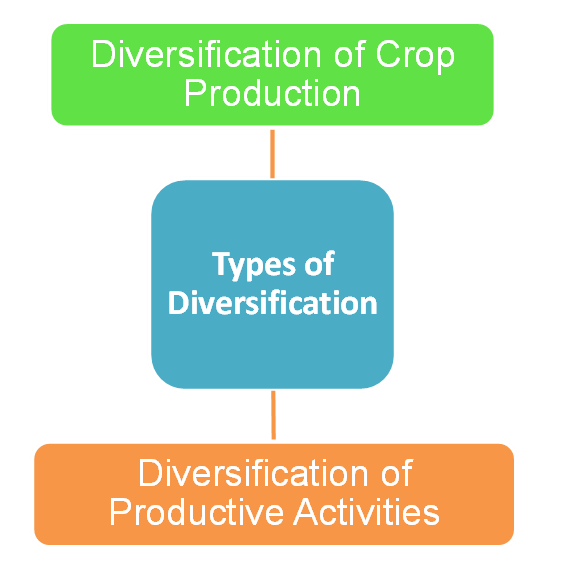DIVERSIFICATION OF AGRICULTURAL ACTIVITIES
Reason for Diversification
The need for diversification arises because:
- There is a greater risk of depending exclusively on farming for livelihood; and
- To provide productive sustainable livelihood options to rural people.
Benefits of Diversification
Much of the agricultural employment activities are concentrated in the Kharif season. During the Rabi season, it becomes difficult to find gainful employment in areas where there are inadequate irrigation facilities. Therefore, diversification into other sectors is essential:
- To provide supplementary gainful employment;
- To enable them to earn higher levels of income; and
- To enable rural people to overcome poverty and other troubles.
Types of Diversification
Diversification includes two aspects:
- Diversification of Crop Production (Change in Cropping Pattern);
- Diversification of Productive Activities (shift of workforce from agriculture to other allied activities and non-agriculture sectors).

Diversification of Crop Production
- It involves a shift from a single-cropping system to a multi-cropping system.
- Diversification involves a shift in cropping patterns from food grains to cash crops. The main aim is to promote a shift from subsistence farming to commercial farming.
- In India, agriculture is still dominated by subsistence farming and farmers give prime importance to the cereals in the cropping system.
- Multi-cropping system reduces the dependence of farmers on one or two crops as they are engaged in growing a wide variety of crops.
- There is a need to encourage farmers to take up the cultivation of a wide variety of crops. It will also raise their income.
Diversification of Productive Activities
- It would provide alternative avenues of sustainable livelihood and would raise the level of income.
- Non-farm Activities have several segments. Some segments of non-farm activities possess dynamic linkages that permit healthy growth, while others are in subsistence, low productivity propositions.
- The dynamic sub-sectors include agro-processing industries, food processing industries, leather industry, tourism, etc.
- Those sectors, which have the potential but seriously lack infrastructure and other support, include traditional household-based industries, like pottery, crafts, handlooms, etc.

 PathSet Publications
PathSet Publications
